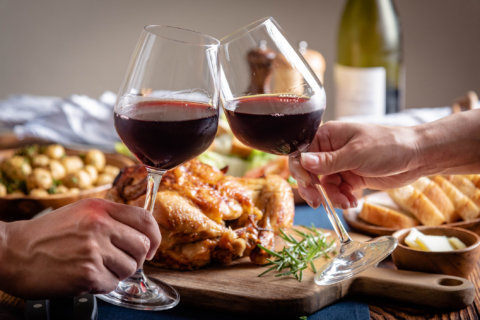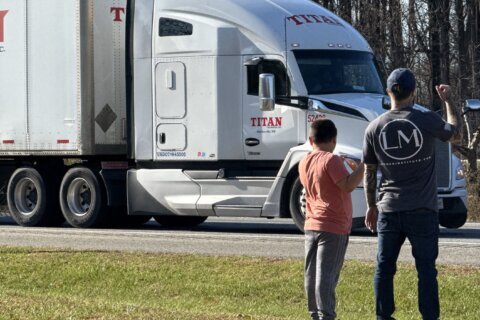For people with celiac disease, avoiding gluten on Thanksgiving can cook up a lot of stress.
Maria Tadic, a registered dietician with INOVA Fair Oaks Hospital in Virginia, has some advice to ease concerns for the gluten-free guest as well as the person hosting the meal.
“It can be a tricky situation; it can bring a lot of fear for the person who the person who has celiac,” Tadic said. “You don’t want to have any symptom flare-ups, but you also don’t want to feel like you’re imposing on your host.”
Here are some ways to make sure food is gluten-free and safe for a person with celiac to gobble up this Thanksgiving:
For the host
To start, what exactly is gluten? The celiac foundation defines it as the proteins found in wheat, rye, barley and triticale.
When you think gluten, think glue. The protein is often — but not always — used to hold things together.
Cook from scratch when possible; know what to avoid
Premade items such as casseroles, pies and rolls could have gluten. Other immediate red flags include the stuffing and casseroles with crunchy toppings such as breadcrumbs.
“The more than you can make from scratch, the better,” Tadic said.
But bread isn’t the only problem: “Gluten unfortunately can be in a whole host of things, and it’s not just in those obvious things that we think of like bread and pasta.”
Marinades and seasonings can be culprits — which means even your turkey might not be gluten-free. But that doesn’t mean you’re quitting flavor cold turkey.
“You can make a lot of marinades and dressings and seasoning blends yourself,” Tadic said. “That way, you know they’re gluten free and also designed for your own palette.”
Plain spices (such as pepper or cumin) and plain herbs (such as parsley or rosemary) can add flavor without danger for the person with celiac. Tadic also said salt can bring out flavor in vegetables and meats.
Don’t cross-contaminate your gluten-free dishes
Cross-contaminating the gluten free dishes can ruin your hard work researching safe ingredients.
Cross-contamination happens when gluten-free foods are exposed to gluten. If one of your guests scoops some gluten-filled stuffing onto their plate, then uses the same utensil load mashed potatoes (which are gluten-free), the celiac guest could get sick from that stuffing crumbs that are now hiding in your mashed potatoes.
Issues could also arise if gluten-free food is cooked on the same surface as gluten — so make sure you clean countertops and utensils. Items such as toasters that are hard to thoroughly clean could be danger zones.
Cross contact can be avoided, Tadic said, by doing some meal prep ahead of time and labeling containers that are storing gluten free food.
If you serve buffet-style, keep the dishes apart and remind guests about the difference. One way to make sure guests use the right tools is to color-code gluten vs. gluten-free dishes or utensils.
Be understanding
“It may not be something that you’re totally familiar with or understand the consequences of, so talk to the person who has celiac disease,” Tadic says.
Ask the person with celiac about brands or dishes they’d suggest for your meal.
A good question to ask, according to Tadic: ‘Is there any way I can make you feel more comfortable in my home?’
For the celiac/gluten avoider
Keep open communication with both your host and other guests. Tadic said it’s important to give a detailed explanation of your celiac disease not just to the hosts, but the guests you’re dining with.
“This is your health and your body, and you want to make sure that you can enjoy your holiday safely,” she said. “So don’t feel that you can’t talk to your host about what’s going on.”
Tadic said most hosts are OK with making adjustments or substitutions. And chefs, especially those feeling overwhelmed, will appreciate you bringing your own safe dish.








